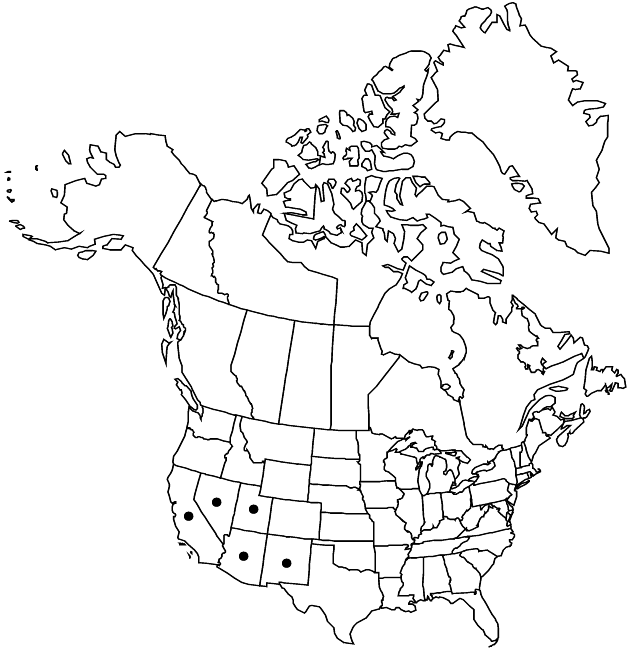Difference between revisions of "Chaenactis carphoclinia"
in W. H. Emory, Rep. U.S. Mex. Bound. 2(1): 94. 1859.
FNA>Volume Importer |
FNA>Volume Importer |
||
| Line 22: | Line 22: | ||
|distribution=sw United States;nw Mexico. | |distribution=sw United States;nw Mexico. | ||
|discussion=<p>Varieties 2 (2 in the flora).</p><!-- | |discussion=<p>Varieties 2 (2 in the flora).</p><!-- | ||
| − | --><p>Though occasionally suspected (P. Stockwell 1940), there are no confirmed natural or artificial hybrids between Chaenactis carphoclinia and any other member of the genus. The presence of paleae on the receptacle of C. carphoclinia is unique in Chaenactis.</p> | + | --><p>Though occasionally suspected (P. Stockwell 1940), there are no confirmed natural or artificial hybrids between <i>Chaenactis carphoclinia</i> and any other member of the genus. The presence of paleae on the receptacle of <i>C. carphoclinia</i> is unique in <i>Chaenactis</i>.</p> |
|tables= | |tables= | ||
|references= | |references= | ||
| Line 57: | Line 57: | ||
|publication year=1859 | |publication year=1859 | ||
|special status= | |special status= | ||
| − | |source xml=https://jpend@bitbucket.org/aafc-mbb/fna-data-curation.git/src/ | + | |source xml=https://jpend@bitbucket.org/aafc-mbb/fna-data-curation.git/src/8f726806613d60c220dc4493de13607dd3150896/coarse_grained_fna_xml/V19-20-21/V21_1012.xml |
|tribe=Asteraceae tribe Heliantheae | |tribe=Asteraceae tribe Heliantheae | ||
|subtribe=Asteraceae (tribe Heliantheae) subtribe Chaenactidinae | |subtribe=Asteraceae (tribe Heliantheae) subtribe Chaenactidinae | ||
Revision as of 15:28, 18 September 2019
Plants (5–)10–30(–60) cm. Leaves basal (often withering) and, usually, cauline, 1–6(–10) cm; largest blades ± 3-dimensional, not to somewhat succulent; primary lobes mostly 2–7(–10) pairs, ultimate lobes ± crowded to remote, antrorse, linear, terete. Peduncles 2–6 cm. Involucres obconic to ± cylindric or hemispheric, mostly 5–10 mm diam. Phyllaries: longest 7–10 mm, ± granular-glandular and villous; apices (all or inner) erect to incurved, usually reddish, acuminate, aristate, terete. Receptacles: paleae (0–)3–10+ (persistent, ± phyllary-like, apices visible among mature floret buds). Corollas 4–6 mm. Cypselae ± terete, 3–4.5 mm; pappi usually of 4(–5) scales, longest 3–5 mm.
Distribution

sw United States, nw Mexico.
Discussion
Varieties 2 (2 in the flora).
Though occasionally suspected (P. Stockwell 1940), there are no confirmed natural or artificial hybrids between Chaenactis carphoclinia and any other member of the genus. The presence of paleae on the receptacle of C. carphoclinia is unique in Chaenactis.
Selected References
None.
Key
| 1 | Leaves basal and cauline, longest 1–6(–7) cm; petioles scarcely dilated proximally, ± herbaceous | Chaenactis carphoclinia var. carphoclinia |
| 1 | Leaves ± basal, longest 7–10 cm; petioles dilated proximally, ± indurate | Chaenactis carphoclinia var. peirsonii |